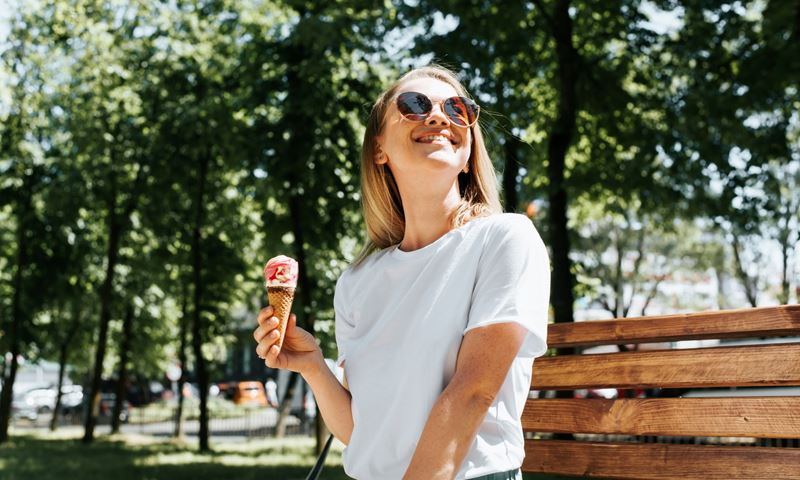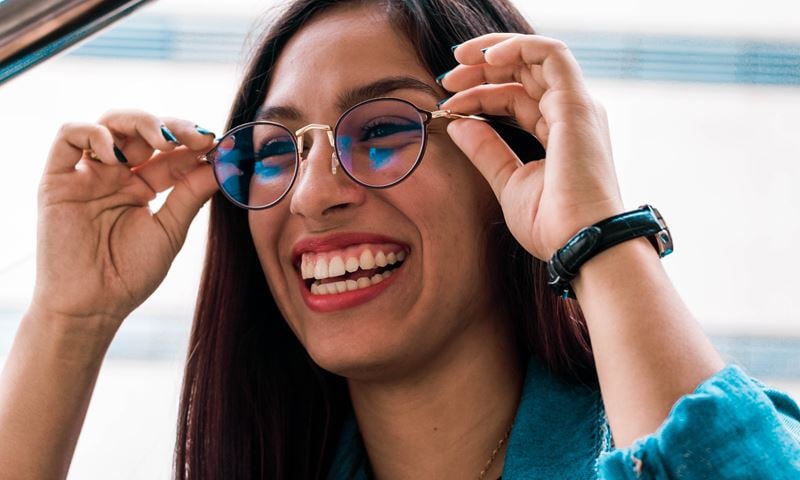Sunglasses are a universal fashion statement, but their benefits extend well beyond their stylish appeal. The use of protective eyewear dates back as far as 2000 years ago, yet modern sunglasses were originally used in the early 20th century to protect the eyes from syphilis-induced light sensitivity. Their popularity exploded in the 1920s and since then, sunglasses have become a fashionable fixture for all seasons. Sheltering the eyes from UV radiation is important year-round, but with the summer months around the corner, now is a great time to ensure you are best protecting your eyes.
From the beach to the snow, for leisure or work, sunglasses are an essential accessory. These days, sunglasses can do much more than minimise glare. Many now have subtle tools to help shield the wearer's eyes from an array of potential harms, and even improve their vision. GMHBA Eye Care optometrist, Sarah Edwards explores the health-protecting benefits of wearing sunglasses.
Ultraviolet radiation
Ultraviolet (UV) radiation is a type of energy produced by the sun. Exposure to too much UV radiation can cause damage to the skin and eyes, sunburn, tanning and some cancers. Specifically to our eyes, long-term exposure to UV can contribute to the progression of several eye conditions, including:
- Cataracts are the slow clouding over of the lens in the eye that results in decreased vison. Cataracts commonly develop slowly over the course of a lifetime, but this process is accelerated by increased UV exposure.
- Pterygiums are fleshy lumps of tissue that begin on the white of the eye and can slowly grow over the cornea. They can be uncomfortable, appear red, and potentially impact your vision if they extend to the central portion of the cornea.
- Photokeratitis also known as 'snow blindness', is basically sunburn of the eye. It can cause pain, redness, swelling and light sensitivity, which may not be apparent until hours after the UV exposure occurs.
- Solar retinopathy is permanent damage to the retinal photoreceptors caused by UV rays passing directly through the eye and hitting the retina. You should never look directly at the sun, even while wearing sunglasses.
- Basal cell carcinomas are non-melanotic skin cancers. The delicate skin around the eye and eyelid is highly susceptible to this type of carcinoma as it is often missed when applying sunscreen.
A UV coating on sunglasses provides much needed protection for your eyes. Additionally, large close-fitting wrap frames will help to shield the eye area from peripheral UV rays.
Environmental irritants
Exposure to environmental irritants such as wind, dust, pollens or heat can also cause damage to the surface of the eye. When this occurs, it is common for the eyes to water, become red and irritated, causing discomfort. Sunglasses therefore offer more than just UV protection, as they provide a physical barrier to protect the ocular surface.
Glare and reflection
An obvious reason to wear sunglasses is to decrease the glare from the sun, however in many cases it is the reflected glare of surfaces that is most problematic. This blinding glare may come from sunlight reflecting off:
- the rear windshield of the car in front of you
- water
- sand
- snow
- oil or water on the road's surface
Polarised lenses protect your eyes from reflected glare, and improve contrast, visibility and most importantly comfort. Reflected glare is typically horizontal and polarised lenses work by blocking this horizontal light, only allowing vertical light to pass through. Polarised lenses can also be produced with a UV coating making them a great option in sunglasses. For example, polarised lenses help reduce the glare created by the sun when it hits the water surface, making them an excellent option for fisherman as it allows them to see into the water.
Tint options
Tinted lenses come in a range of colours to filter different wavelengths of light, making them suitable for varied purposes. When next updating your sunglasses, it pays to consider that different tint colours may be better suited to your lifestyle and hobbies. Some tint colours are made to enhance the colours you see, and others may be better for reducing glare, blocking light or even improving your visual function. Green lenses have become popular among golfers as they can provide better contrast. Brown tints are often preferred in low light, mountain biking, trail running and winter months, while yellow tints are great for snow sports. Grey tints are popular in Australia as they tend to provide a ‘true colour’.
Clarity
Reducing glare using tints and polarised lenses will improve the clarity of your vision, and those of us requiring a prescription don’t need to miss out. Prescription lenses can be tinted, have UV coatings and be polarised, to allow you to enjoy your best possible vision, be it while reading by the pool or keeping an eye on your kids in the surf.
While sunglasses may be seen simply as a fashion item, they are also designed to provide comfort, clarity and protection for your eyes. With this knowledge on hand, it’s important to consider UV protection, polarisation and the prescription – as well as the frame design and fit – when choosing your next pair.
The team at GMHBA Eye Care can advise you on the best options to suit your lifestyle and level of vision.



